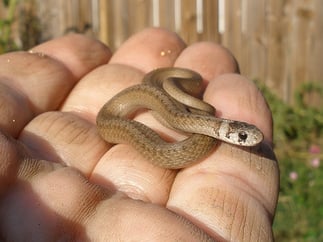Snake Facts and Statistics
According to the CDC, there are a 7,000 to 8,000 venomous snakebites every single year in the United States. Of those bitten, five will die from their bite. While not nearly as common in the United States as in other parts of the world, snakebites still pose a serious threat, and every single state, with the exception of Alaska, is home to at least one specie of venomous snake.
There are a number of poisonous snakes, but the most widely distributed venomous snakes in the United States are rattlesnakes, copperheads, coral snakes, cottonmouths, and water moccasins. It is important to recognize that snakes live throughout the US, including where you live. If you or someone you know is ever bitten by a snake it is important to always treat the bite as if it were poisonous. Seek medical attention as soon as possible!
Snakebite Symptoms
Most people know immediately if the were bitten by a snake. But because this is not always the case, knowing all of the signs and symptoms of snakebites is critical in order to promptly diagnose a victim. Even when witnessed, understanding the following symptoms can help with the administration of first-aid and can provide insight for when to contact medical professionals.  The symptoms of snakebite include:
The symptoms of snakebite include:
- Two puncture marks from the snake’s fangs
- Swelling and redness around the wound area
- Tenderness and pain around the wound area
- Difficulty seeing or total loss of vision
- Sweating
- Nausea and vomiting
- Loss of feeling in face and extremities
- Loss of consciousness.
Snake Bite Prevention
Recognize Common Snake Habitats
Snakebites can be difficult to prevent since the majority of snakes are camouflaged and spend their time hiding in discreet locations. Most snakebites occur after the victim inadvertently wanders in to a snake’s habitat. If a snake feels threatened they will strike. The best way to avoid snakebites is to know common snake habitats and avoid these areas whenever possible.
Common snake habitats include tall grass, leaf piles, rocks, holes in the ground, and wood piles.
Snake Species Recognition
Knowing where snakes might be is only part of preventing snakebites, however. For people with more exposure to snakes, there are other protective measures that can be taken. Knowing what species are poisonous and what geographic locations they’re likely to be found in can help prevent attacks from the most dangerous venomous snakes. VenomByte.com is a great resource to see what poisonous snake species live in a particular area.
Safely Approaching Snakes
The best way to avoid snakebites is to avoid all snakes, regardless of species, and never try to handle them. It is important to know that snakes can strike from distances greater than their body length, so always maintain a safe distance. When in close proximity to a snake, avoid sudden movements and loud noises and slowly back away from the area.
Proper Clothing Can Prevent Medical Emergencies
Wearing proper attire while outdoors is a good practice in general, and can help in protecting you from snakebites. Closed-toed shoes are essential when outdoors and can protect feet should you step on or near a snake. Boots are an even better form of protection since they are typically made of more durable materials and can extend beyond the ankle. Long pants can also provide some protection. Always wear thick gloves if performing work outside that involves using your hands like hauling brush or moving logs.
Snakebite Treatment
Knowing how to treat a snakebite can save a life. Snakebites are terrifying, so knowing how to react confidently can help prevent the natural reaction to panic. Follow these steps in order to give a snakebite victim the best opportunity for recovery:
Step 1 – Secure the area
Snakes, unlike bees, are capable of inflecting multiple bites, so be sure to verify that the snake has retreated. Also, be aware that snakes sometimes reside in groups, so ensure no other snakes are in the area to keep the victim and everyone else out of danger. If the snake is still nearby or in a defensive position, it is best to try and move the victim from the area before taking any further actions.
Step 2 – Identify the snake
If possible, attempt to identify any characteristics of the snake or ask the victim what they can identify about the snake. If no one saw the snake do not attempt to locate it as this could result in more bites. Knowing the size, shape, and color of a snake can help medical professionals treat the bite more effectively, but getting this information is not worth exposing anyone to more bites.
Step 3 – Calm the victim
Keeping a snakebite victim calm can be challenging, but it is important since keeping them calm can slow the spread of the venom and can prevent them from going into shock. Reassure the victim and make sure they are comfortable.
Step 4 – Seek medical attention
Immediately after someone is bit by a snake, contact, or designate someone to contact, medical help immediately. If the individual received a bite from a poisonous snake, the sooner they receive medical treatment the better.
Step 5 – Administer first-aid
Before medical help arrives, there are some first-aid steps that can help stabilize the victim.
- Move the victim to a laying or seated position and position them in way that the wound is below the level of the heart.
- Carefully rinse the bite with warm water and soap.
- Apply clean dressings to the wound to cover it.




